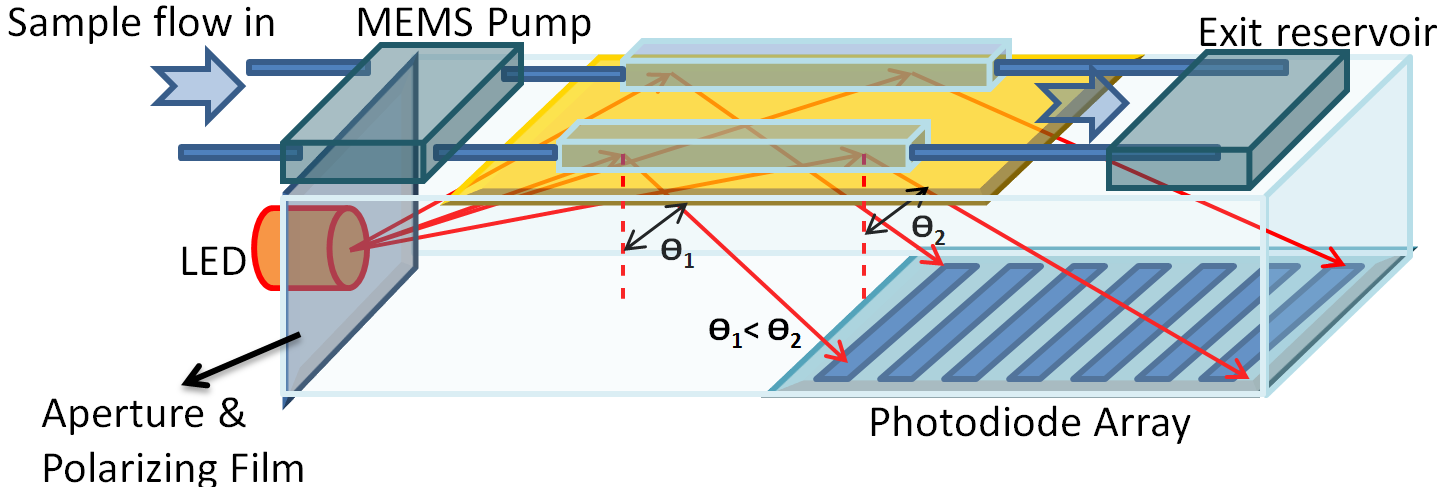Faster diagnostics with cheap, ultra-portable blood testing
September 2, 2011

Surface plasmon resonance (SPR) system for selective blood protein sensing by measuring reflected light from a disposable microfluidic chip (credit: University of Toledo)
University of Toledo researchers have developed a low-cost, portable technique that can quickly and reliably detect specific proteins in a sample of human blood.
The researchers chose thrombin and thrombin-binding aptamers (short strands of nucleic acid that mimic antibodies) to latch onto free-floating proteins in the blood. Thrombin is a naturally occurring protein in humans that plays a role in clotting. They attached the aptamers to a sensor surface, a glass slide coated with a nanoscale layer of gold. As the blood sample was applied to the testing surface, the aptamer and their corresponding proteins latched together.

An expanded view of the surface of a aptamer-functionalized surface plasmon resonance gold chip (credit: University of Toledo)
They then determined if the couples pairing was successful using surface plasmon resonance (SPR), a real-time optical sensing technique. A surface plasmon is a “virtual particle” created by the wave-motion of electrons on the surface of the sensor.
If the protein is present and has bound to the aptamer, conditions for which resonance will occur at the gold layer will change. This resonance change is detected through a simple reflectance technique that is coupled to a linear detector.
This technique could help in a wide range of medical sensing applications, including diagnosing diseases like cancer and diabetes long before clinical symptoms arise, the researchers said.
Ref.: Rui Zheng, et al., Development of a highly specific amine-terminated aptamer functionalized surface plasmon resonance biosensor for blood protein detection, Biomedical Optics Express, 2011; [DOI:10.1364/BOE.2.002731]
